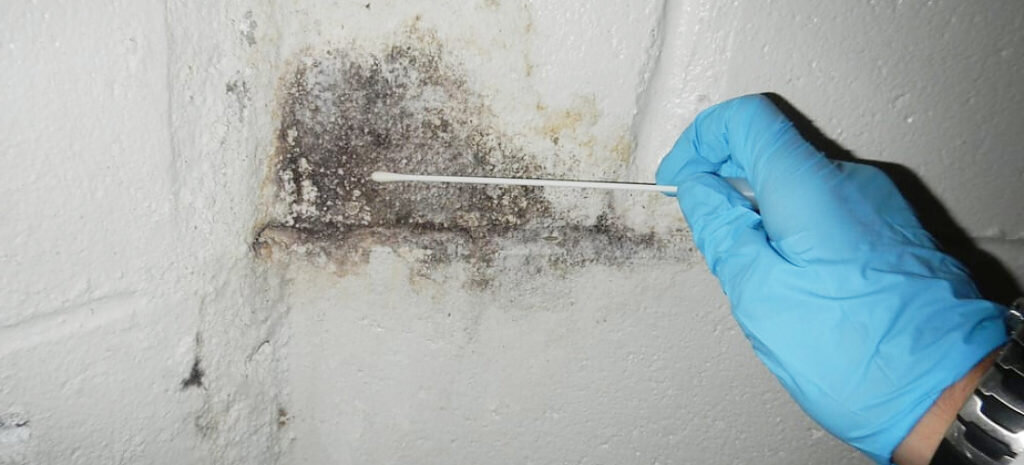Effective Post Mold Remediation Cleaning Protocols
Effective Post Mold Remediation Cleaning Protocols
Blog Article
Effective Post Mold Remediation Solutions for Your Home
Mold and mildew growth in homes can be a relentless concern, frequently requiring a systematic technique for reliable post-remediation options. From comprehending the elements that add to mold development to applying correct cleaning methods and moisture control measures, the procedure can be complex yet vital for preserving a healthy living environment. Additionally, exploring all-natural removal remedies and developing a regular for ongoing upkeep are essential components of an extensive mold removal approach. As house owners aim to address mold problems, finding one of the most efficient remedies becomes extremely important for the wellness of their households.
Understanding Mold Development Factors
The primary element contributing to mold and mildew development is dampness. Mold and mildew spores require moisture to grow and sprout, making humid or wet settings extremely prone to mold infestations.

In addition, air flow and light direct exposure can influence mold development. Locations that lack appropriate air flow and natural light are extra susceptible to mold and mildew development. By resolving these elements adequately, individuals can properly mitigate mold and mildew growth and protect their living settings.
Proper Mold Cleaning Methods
Utilizing effective cleaning techniques is necessary in preventing the reappearance and resolving of mold and mildew contamination in indoor atmospheres. The first step in appropriate mold cleaning is to have the afflicted location to avoid the spread of spores to uncontaminated areas.

Carrying Out Moisture Control Actions
To properly prevent mold growth and contamination in interior atmospheres, applying dampness control measures is paramount. Moisture is the primary element that fuels mold development, making it vital to manage humidity levels within the home. One effective step is to make use of dehumidifiers to keep indoor moisture degrees listed below 60%. Furthermore, making sure proper ventilation in areas prone to moisture build-up, such as kitchen areas and restrooms, can assist minimize the threat of mold growth. Frequently checking and repairing any leakages in pipes, roofings, or home windows is additionally necessary in stopping excess wetness accumulation. Using exhaust fans while cooking or bathing, and enabling air blood circulation by maintaining furniture a little far from walls can assist in wetness control. Making use of moisture-resistant products in high-humidity areas, such as mold-resistant drywall and paints, can be beneficial. By faithfully executing these dampness control procedures, property owners can effectively lower the probability of mold recontamination and keep a healthy interior atmosphere.
Making Use Of Natural Removal Solutions
After successfully applying moisture control procedures to protect against mold and mildew growth in interior settings, homeowners can currently check out the effectiveness of all-natural remediation solutions in keeping a healthy living space. All-natural remediation solutions use environmentally pleasant methods to combat mold and mildew and mildew, making them a popular selection for those looking for non-toxic alternatives. By including these all-natural remediation options right into their cleansing routines, homeowners can efficiently battle mold and mildew development while promoting a healthier indoor atmosphere for themselves and their households.

Keeping a Mold-Free Atmosphere
In order view website to avoid mold and mildew reoccurrence and guarantee a consistently mold-free environment, it is crucial for homeowners to carry out aggressive upkeep practices. On a regular basis evaluating areas prone to mold development, such as washrooms, attics, kitchens, and cellars, is critical. Addressing any leaks, water damages, or excess wetness promptly can considerably decrease the danger of mold advancement. what to do after mold remediation. Proper ventilation in locations with high moisture degrees is likewise essential to stopping mold growth. Utilizing dehumidifiers or exhaust fans can aid maintain optimum dampness levels and inhibit mold and mildew spores from flourishing.
Furthermore, maintaining tidiness in the home is important for mold and mildew prevention. Consistently cleansing and dusting surfaces, carpetings, and upholstery can help get rid of mold spores before they have a chance to increase and clear up. Using mold-resistant items for building materials and furnishings can further assist in developing a mold-free setting. Finally, maintaining indoor plants in check and making sure proper drain in exterior landscape design can reduce wetness accumulation, decreasing mold removal remediation solutions the likelihood of mold and mildew problems. By adhering to these proactive upkeep techniques, property owners can properly promote a mold-free living space.
Verdict
In verdict, it is necessary to resolve mold and mildew growth factors, use proper cleaning methods, carry out dampness control procedures, use natural removal options, and maintain a mold-free setting in order to successfully handle post mold and mildew removal in your house - Post Remediation verification. By complying with these approaches, you can prevent mold from persisting and make certain a healthy living environment for you and your household
The key variable contributing to mold growth is wetness. Mold spores need dampness to germinate and flourish, making damp or damp environments very vulnerable to mold invasions.To effectively avoid mold development and contamination in indoor environments, applying dampness control actions is extremely important. Additionally, guaranteeing proper ventilation in locations prone to moisture visit this website buildup, such as shower rooms and kitchen areas, can assist lower the risk of mold and mildew growth.After efficiently implementing dampness control actions to protect against mold and mildew growth in indoor environments, homeowners can currently discover the efficiency of natural remediation remedies in keeping a healthy and balanced living space.
Report this page